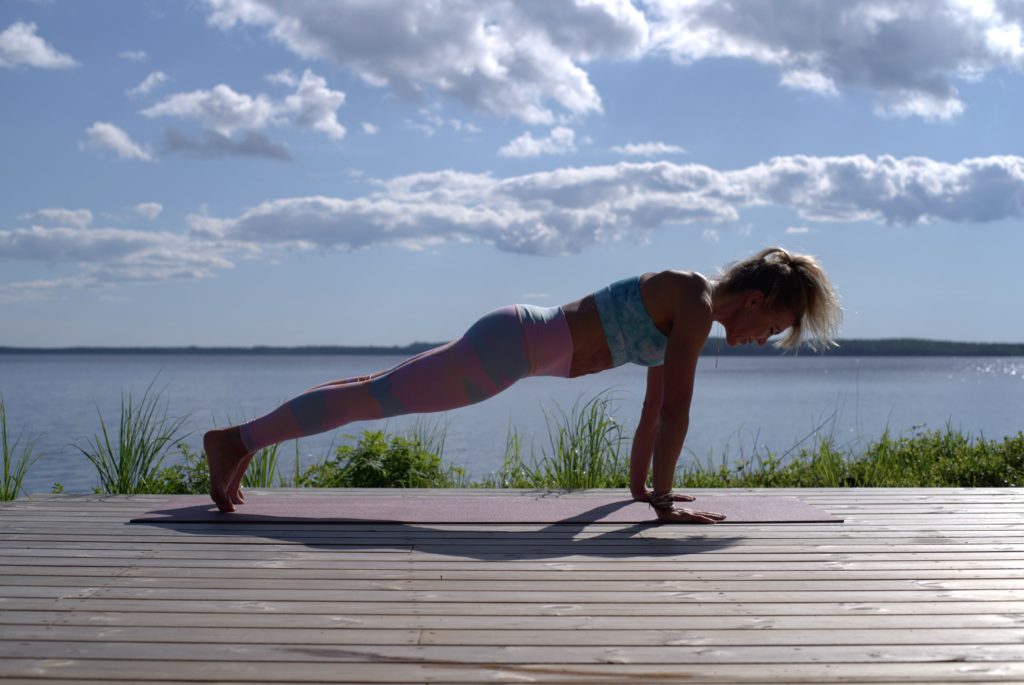Core Health

Core strength is essential to so many aspects of our health and fitness. When you have a strong core, you are less likely to injure yourself doing daily tasks, your breathing is more efficient, and you can train better if you’re involved in athletic activities. Many people don’t realize that your core is much more than just the ab muscles. Next month, Vessel classes will bring attention to the many different areas of the core and how developing them will help you in the future.
Diaphragm
The diaphragm sits at the top of the core just under the lungs. It plays a pivotal role in both breathing and core stability. Sadly, we don’t often pay attention to it. Most people take short, shallow breaths called stress breaths. These types of breaths stay in our chest and shoulders and don’t allow us to fully expand our lungs or the muscles surrounding them. Due to underuse, our diaphragm becomes weak and it causes us to lose stability in our core. It also keeps us from taking the natural breaths our body needs.
Next time you’re around a new baby, notice their breathing. When they are calm, their entire belly will fill with air. Then, they release it completely as they exhale. But, when they are upset, they won’t take full breaths. Instead, they will only breathe partial breaths expanding just their chest. Unfortunately, most of us breathe those partial breaths. We were made to take full diraphragmic breaths to strengthen and stabilize our core. That’s why babies do it naturally. Their bodies know what to do to give them the support they need.
Just like any other muscle, underuse (in this case from not breathing properly), causes weakness. Since the diaphragm is the top of our core, weakness in that area leads to imbalance in the rest of the core. That’s why it’s so important to begin your core strength building at the top.
Abdominals
Most people think of the abdominals when they hear the word “core”. This is the second part of the core and it’s attached to the diaphragm.
There are four main muscle groups that compose this section: transverse abdominis, recuts abdominis, external obliques, and internal obliques. Together, these muscle groups help your spine movement, allow twisting movements, and stabilize the trunk. They also work to protect our internal organs.
Since this is the most visually obvious part of the core, it’s often worked out the most. The problem is that many people don’t work all of the groups evenly which causes imbalances. Imbalances can often lead to injury in the long run.
Multifidus
This is the part of the core group attached to your spine. Its main function is to provide stabilization of the lumbar spine and works with the transverse abdominis and pelvic floor to do so. Many people with a weak multifidus suffer from lower back pain and spinal instability.
Immobility and sedentary lifestyles are the most common cause of weakness in the multifidus. That’s why many people who sit a lot have low back pain. A weak multifidus can cause instability, pain, and even vertebral compression, so it’s extremely important to include this muscle group in your core strengthening program.
Pelvic Floor
Pelvic floor muscles are responsible for supporting the bowel, bladder and uterus. The pelvic floor is the lowest part the core — attaching to the multifidis and sitting between the tailbone and pubic bone. They form a kind of hammock and connect with other tissues and ligaments to hold the pelvic organs in place so they can function correctly. Hip and trunk stability are also dependent on these muscles.
Pelvic floor dysfunction happens when the muscles become weak and no longer do the job the way they are supposed to. When you have dysfunction, you are unable to relax the pelvic floor muscles so that your body releases urine or bowels correctly. This is very common in women who have carried children, but it can also happen to men — especially after injuries or as they age. Obesity and menopause are also triggers for pelvic floor issues.
There are a variety of exercises that can help strengthen the pelvic floor and many you can do on your own. For a few ideas on how to begin strengthening this part of your core, check out this article from Healthline. It’s a great starting point!
In conclusion
The above is just an introduction of the core and how important core health is to your quality of life. If you’re local, we would love to share more with you in our October classes! If you’re not local, we hope this provides you with some helpful information and is a good starting point for your core health journey!